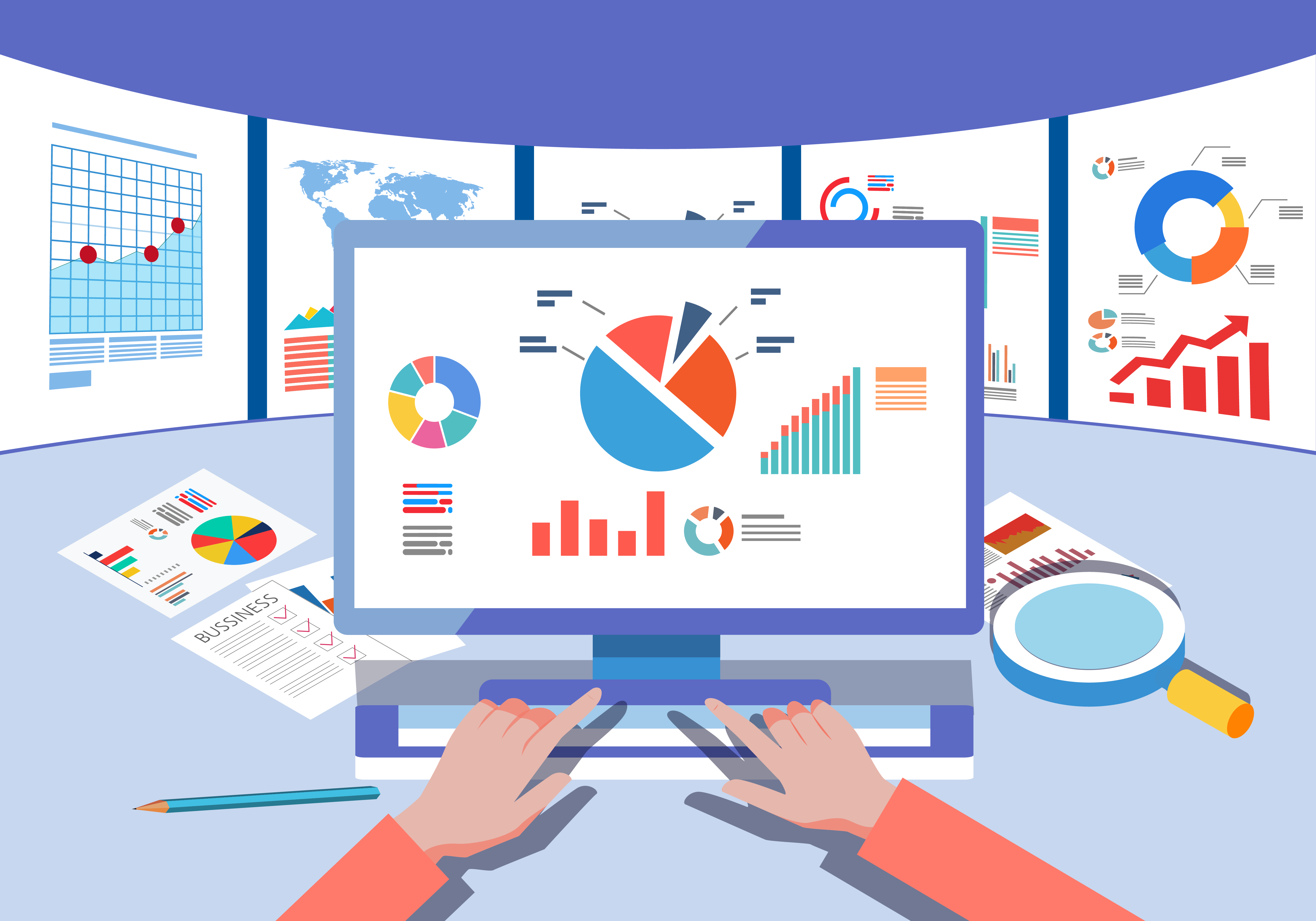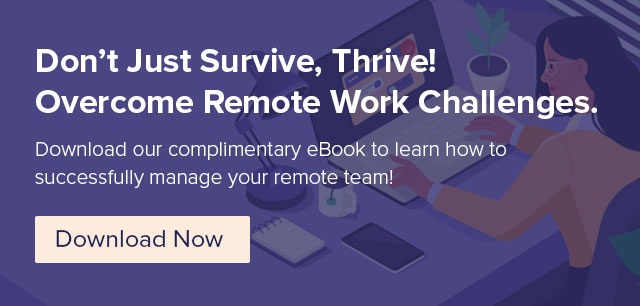Benefits of Dashboard Reporting for Remote Team Engagement

As we move through 2021, as vaccination numbers rise, as businesses return to capacity, as concerts return, it’s inevitable that we will revisit the discussion regarding remote work. Many businesses are in the throes of determining when, and whether, employees will be returning to the office full time. However, research suggests that 25-30% of the workforce will remain, on at least some days, remote.
Given that statistic, it’s only natural that businesses begin to explore the best ways to maintain the productivity, collaboration, and engagement given the new remote landscape. In fact, employers assert that one of the primary reasons for in-office interactions is to maintain corporate culture and employee engagement. Given that priority and the demand for remote work situations, it’s clear that employers will need the right tools, like dashboards, to help them maintain the successes we’ve seen over the last year.
Quick Links
- What is employee engagement?
- Why is employee engagement important?
- Why remote teams struggle with engagement
- What is dashboard reporting?
- The benefits of dashboard reporting for remote teams
- Keep your workforce aligned with BrightGauge's Dashboards
What is employee engagement?
Employee engagement gauges, both qualitatively and quantitatively, the experience of employees with the organization where they work. Further, it’s important to distinguish between employee satisfaction/happiness and employee engagement as the two are not the same thing.
More specifically, an employee can be satisfied with their job, but still not feel connected to the work they’re doing or the organization. Employee engagement really looks at the emotional and psychological connection to a workplace. That connection then translates to an employee’s willingness to put in significant effort to achieving overall business goals (beyond individual goals).
Why is employee engagement important?
While many businesses focus on employee satisfaction and engagement is certainly impacted by happiness, engagement is a far better indicator of employee and organizational health than satisfaction for a variety of reasons. In fact, employee engagement can do the following:
1. Improve productivity
Especially when we’re looking at remote work where productivity has been a concern, one way to keep employees productive is to keep them engaged. Engaged employees want to do the work and that drives them to work harder, look for more efficient ways to complete tasks, collaborate more, and search for solutions to business obstacles or friction points. More specifically, engaged employees are 17% more productive.
Further, increased productivity then drives your bottom line. In fact, businesses with engaged employees are 22% more profitable.
2. Reduce employee churn
Training new employees takes time and money. Sometimes, it can delay or postpone client work and, overall, reduces how effective your business can be in delivering the goods or services you provide. However, engaged employees are far less likely to leave. Specifically, companies with highly engaged employees are able to reduce employee turnover by as much as 31%.
3. Reduce absenteeism
In addition to keeping employees from leaving permanently, highly engaged employees are also more likely to show up daily. Research shows that simply engaging employees may result in a 41% reduction in absenteeism.
4. Improve bottom line
It’s not just hiring and training costs. Low employee engagement can create productivity slowdowns and low morale which impacts U.S. business to the tune of $450-550 billion a year. In short, keeping employees engaged is a smart financial move.
5. Improved morale
You’ve likely seen it before, and we’re hinting at it above, engaged employees who are excited about their workplace and are invested in business goals are more likely to be energized. In turn, this impacts the teams and employees around them. We’ve all likely worked with someone who’s “checked out” and that person tends to drag a team down. Engaged employees are cheerleaders and help motivate others around them.
Despite its importance, Gallup research suggests that nearly 51% of employees are not engaged at work. Considering the importance and what appears to be a failure to make strides in employee engagement, how can businesses, working remotely, improve employee engagement?
Why remote teams struggle with engagement
It’s really pretty simple. Employee engagement is about connection and connection is fostered in a variety of ways, but, according to Gallup, one of the most important factors is the relationships we form at work.
As one can imagine, remote work has had a significant impact on our ability to build and maintain work relationships. One of the biggest impacts has been on the informal interactions we have with our co-workers. Research suggests that these informal moments, passing in the hall, gathering at someone’s desk briefly, grabbing coffee together, etc., are the foundation for many of the stronger relationships we build at work.
Further, face-to-face communications are still a stronger way to communicate and for us to understand one another through expressions and body language. Many of us have been party to a misunderstanding through electronic communication and these small miscommunications can have a larger impact on our relationships.
However, other research suggests that some of the stronger relationships created at work have been reinforced by remote work as “work friends” actually make an effort to stay connected.
And, it’s important to note, that there is quite a bit that can be done to improve engagement in a remote work environment and that largely has to do with team leaders and management ensuring that teams stay connected, communicative, and collaborative. That means leveraging every tool available to them, such as dashboards which can keep teams connected to their cooperative goals and objectives.
What is dashboard reporting?
Dashboard reporting is a technology tool that allows team leads to collect data from various sources and place it into a single, easy-to-review report or data dashboard.
The dashboard reporting tool typically has some built-in integrations with other data collection solutions, such as customer relationship management (CRM) software, website analytics tools, employee productivity monitoring tools, and the like. Dashboard reporting tools pull data from the integrated software to display it on a data dashboard or report—which is often accessible online.
The benefits of dashboard reporting for remote teams
So, how can data dashboard reporting tools help remote workers collaborate more effectively and stay aligned with their business’ goals? Here are a few of the ways that using data dashboards with remote teams can help:
- It puts all of your analytics in an easy-to-manage location. One of the big challenges of remote work is being able to track the performance of employees in real time. A data dashboard tool allows companies to monitor employee performance metrics and see where employees are doing well and where they’re struggling.
- Public dashboards can encourage competition. When multiple employees can see a “leaderboard” of who is ranking high for specific metrics, it can help to keep them informed and encourage some competitiveness. This drives results by keeping employees motivated to beat their peers.
- It can keep management alerted to major performance issues. With the ability to set custom alerts, team leaders can program thresholds for certain performance metrics that, if exceeded, will generate an alert. This allows team leaders to make course corrections with employees in real time, even when everyone is working remotely.
- You can set goals for both individual and team performance. One of the issues with having remote employees is that it can be hard to keep them aligned with the company’s primary goals. With online data dashboards, managers can provide employees with clear success targets they can work towards.
Online data dashboards are both a critical performance management tool for team leaders and a motivational tool for employees. By tracking key performance indicators (KPIs) and showing them to employees, dashboard reporting tools help remote workers stay on track with their goals.
Keep your workforce aligned with BrightGauge’s dashboards
BrightGauge’s data dashboard tool is the perfect solution for keeping employees aligned with your company’s goals, even when they’re working remotely. With BrightGauge, you can:
- See all of your most important KPIs in one place thanks to our extensive list of integrations;
- Check on individual team member’s activity and performance with custom gauges and filters;
- Create leaderboards for employee performance to stimulate healthy competition;
- Make remote 1:1 meetings more effective with employee-specific data dashboards;
- Get alerted to critical performance issues with custom alerts;
- Make data-driven business decisions based on actual performance data from the dashboard;
- Collate easy-to-interpret monthly reports automatically to share with employees, management, and/or customers as needed.
If you're ready to talk about how BrightGauge's business intelligence tools can help your remote team thrive, get in touch with our team today!
Free MSA Template
Whether you’re planning your first managed services agreement, or you’re ready to overhaul your existing version, we've got you covered!



